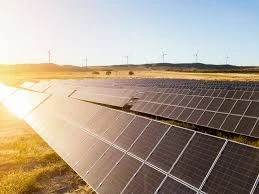Current Trends in Photovoltaic Panel Pricing and Market Analysis
Understanding the Price Trends of Photovoltaic Panels
In recent years, the world has seen a dramatic rise in interest in renewable energy, particularly solar power. This surge in popularity is largely due to a growing awareness of climate change, governmental policies promoting sustainable energy sources, and advancements in technology. A critical component of solar energy systems is photovoltaic (PV) panels, which convert sunlight into electricity. Understanding the price trends of these panels is essential for both consumers and investors looking to harness the power of solar energy effectively.
The price of photovoltaic panels has undergone significant changes over the past decade. In the early 2010s, the average cost of PV panels was around $2 to $3 per watt. However, as production methods improved and competition increased within the market, the price began to drop sharply. By 2020, the average cost had fallen to approximately $0.80 to $1 per watt, representing a decrease of nearly 70% in just ten years. This price decline can be attributed to several factors, including technological advancements, economies of scale in manufacturing, and lower materials costs.
Understanding the Price Trends of Photovoltaic Panels
Economies of scale also play a vital role in reducing prices. As global demand for solar energy increases, manufacturers can produce PV panels in larger quantities, which typically leads to lower costs per unit. Countries like China have become manufacturing powerhouses, producing a significant portion of the world’s solar panels at competitive prices. This has created a market where consumers benefit from the lower costs associated with mass production.
photovoltaic panels price

Despite the overall downward trend in photovoltaic panel prices, there are periods of fluctuation due to various market dynamics. For instance, tariffs imposed on imported solar panels in some regions have affected prices temporarily. Additionally, supply chain disruptions caused by global events, such as the COVID-19 pandemic, have caused shortages and increased costs for certain materials used in PV panels.
Looking forward, several factors could influence the future pricing of photovoltaic panels. One major consideration is the ongoing advancements in technology. As research and development continue to yield more efficient and cost-effective solar cells, we can expect to see further reductions in prices. Innovations like bifacial solar panels, which can capture sunlight on both sides, and building-integrated photovoltaics (BIPV) offer exciting new possibilities that may influence pricing trends.
Government policies and incentives also play a crucial role in shaping the market. Subsidies for solar installation, tax incentives for renewable energy adoption, and commitments to reducing greenhouse gas emissions can accelerate market growth, potentially driving prices down further as demand increases. Conversely, the removal of such incentives could dampen growth and lead to price stabilization or increases.
Consumer awareness and behavior are also essential in shaping photovoltaic panel prices. As more homeowners and businesses recognize the financial and environmental benefits of adopting solar energy, demand will likely continue to rise. There is also a growing trend in financing options, such as solar leases and power purchase agreements (PPAs), making solar energy more accessible to consumers. These financing models can influence the overall investment required for solar installations and thus impact the perceived price of PV panels.
In conclusion, the price of photovoltaic panels has experienced significant declines over the past decade, making solar energy more accessible and attractive than ever. While various factors—such as technological innovations, market dynamics, government policies, and consumer behavior—will continue to influence pricing trends, the overarching narrative remains one of increasing affordability and accessibility. As the world continues to shift toward renewable energy sources, understanding these pricing dynamics will be crucial for individuals and businesses seeking to invest in sustainable energy solutions.
-
String Solar Inverter: The High-Efficiency Solution for Smart Solar EnergyNewsJul.14,2025
-
Revolutionizing Rooftop Energy with the Power of the Micro Solar InverterNewsJul.14,2025
-
Power Independence with Smart Off Grid Solar Inverter SolutionsNewsJul.14,2025
-
On Grid Solar Inverter: Powering the Future with Smart Grid IntegrationNewsJul.14,2025
-
Monocrystalline Solar Panels: High-Efficiency Power for the Future of Clean EnergyNewsJul.14,2025
-
Bifacial Solar Panel: A Smarter Investment for Next-Generation Energy SystemsNewsJul.14,2025







